Korea Times
'US to redeploy troops in Korea from 2017'
By Jung Sung-ki
08-26-2010 17:04
The U.S. Forces Korea (USFK) will start deploying some of its troops to other parts of the region in 2017 under the U.S. Army’s broad transformation worldwide, according to officials at Seoul’s Joint Chiefs of Staff (JCS) and the Combined Forces Command (CFC) Thursday.
The move is in line with the planned relocation of U.S. bases and facilities to Pyeongtaek in Gyeonggi Province and the stabilization of the USFK’s longer, family-accompanied “tour normalization” plan by that time, the officials said.
It is the first time that the timeline for the so-called strategic flexibility of U.S. forces has been unveiled.
The transformation process officially began on June 16 when the 8th Army was designated as a field army construct, said a CFC official.
“The plan is part of the 8th Army’s larger transformation into a forward-deployed warfighting headquarters that would not only be responsible for the defense of South Korea but responsible for contingencies off the peninsula,” the official said, asking not to be named.
U.S. soldiers could be deployed on a rotational basis and come back to South Korea where their family members are stationed, he noted.
The 8th Army will continue to be headed by a three-star general, while its headquarters will move from Seoul to Camp Humphreys in Pyeongtaek, which will be tripled in size to accommodate most U.S. forces and facilities on the peninsula, he added.
Lt. Col. Jeff Buczkowski, spokesman for the 8th U.S. Army, was unavailable for comments.
USFK spokesman David Oten declined to elaborate on the transformation, saying he had no information available.
On Wednesday, Buczkowski was quoted by the Stars and Stripes as saying that no decisions have been made about how many soldiers could deploy at a time, but “any dip below the current U.S. troop strength of 28,500 would be only temporary.”
The spokesman said the 8th Army’s main role will continue to be acting as a deterrent against North Korea and the ability to deploy troops will give the command a “regional focus rather than a peninsula focus.”
The 8th Army currently serves as a force provider to a theater commander. By the end of the transformation, it will become a “field army” or an “echelon above corps” capable of commanding multiple U.S. and multinational corps, said Buczkowski.
The possibility of U.S. troops’ redeployment to other regions has raised concerns here amid fears that such a move could weaken the U.S. military’s commitment to the security of South Korea against North Korean attacks.
A JCS official downplayed such concerns.
“The strategic flexibility involves both concepts of 'flow-out' and 'flow-in,’” the official said. “In terms of flow-out, I don't think the U.S. will deploy large parts of USFK to other regions, given Washington holds the strategic value of the Korean Peninsula in great account and will not ignore security conditions on the peninsula.”
He continued, “Flow-in means the U.S. will dispatch its troops around the globe to the peninsula faster than ever before in case of an emergency, so that deterrence against North Korea will be further improved. So I don't think we'll face any security vacuum because of the strategic flexibility plan.”
Adm. Michael Mullen, chairman of the U.S. Joint Chiefs of Staff, has hinted at the redeployment of U.S. troops in South Korea in recent months.
In a town-hall meeting with U.S. forces here in July, Mullen said, “Part of the discussion we are having with the Republic of Korea, with the leadership, and what we will be able to do in the next several years is support for deployments, literally, off the peninsula.
“But we're not there yet. We haven't got to that point in time. But will there be rotational options? And part of this is, quite frankly, a regional issue,” he said.
gallantjung@koreatimes.co.kr
Friday, August 27, 2010
Text Fwd: US to redeploy troops in Korea from 2017
Subscribe to:
Post Comments (Atom)

![[URGENT PLEA: In Update] EMERGENCY in GANGJEONG Since AUG. 24, 2011](http://2.bp.blogspot.com/-3iz8k-USXVY/TlmRYhhIYtI/AAAAAAAAL2c/9dbF85ZIkIs/s227/jejusit.jpg)
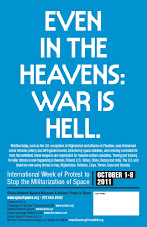
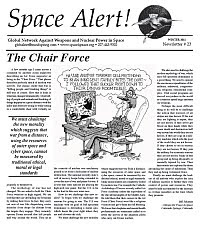

![[Solidarity from Japan for the Jeju] 253 individuals and 16 groups/organizations](http://2.bp.blogspot.com/_gnM5QlRx-4c/TR_YeNVE1yI/AAAAAAAAHWQ/ARyf6oQN0S0/S227/jeju_12_10j.jpg)
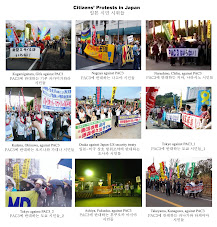
![[Translation] Korean organizations' statement: Immediately cancel the joint ROK-US drill Nov 26](http://2.bp.blogspot.com/_gnM5QlRx-4c/TPOE8VKXHFI/AAAAAAAAGlM/8lryt-8sFjc/S227/1.jpg)
![HOT! [Hankyoreh Hani TV] Beneath the Surface: the investigation into the sinking of the Cheonan](http://4.bp.blogspot.com/_gnM5QlRx-4c/TOI83qht8aI/AAAAAAAAGXU/22SW6Q5ntV8/S227/HaniTV%2BCheonan.gif)

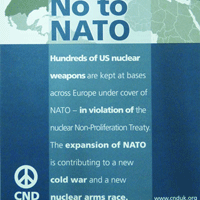

![[Translation]Statement against illegal inspection and unjust lay-off by the Kunsan USAFK!(Nov_2010)](http://4.bp.blogspot.com/_gnM5QlRx-4c/TOPLsVkZMqI/AAAAAAAAGZs/3YnnckIyAaY/S227/gunsan%2Bprotest.gif)
![[Translation] Korean organizations' statement against dispatching special force to the UAE on Nov.](http://4.bp.blogspot.com/_gnM5QlRx-4c/TOP95zHXlCI/AAAAAAAAGak/E0Ug1XtUFfM/S227/antiwarpeace.jpg)
![[Translation] Stop, Joining MD!: South Korean activists' statement and writing on Oct. 25, 2010](http://3.bp.blogspot.com/_gnM5QlRx-4c/TOP7Es4_2sI/AAAAAAAAGac/eWVMPD-U4p0/S227/StopMD.jpg)
![[In Update] People First, NO G-20 (Nov. 6 to 12, Korea)](http://2.bp.blogspot.com/_gnM5QlRx-4c/TJd53XBzHlI/AAAAAAAAFQo/ldO9JPE3eqo/S227/left21_G20.jpg)
![[International Petition] Stop US helipad plan in Okinawa to save great nature](http://4.bp.blogspot.com/_gnM5QlRx-4c/TKC2AHRNzBI/AAAAAAAAFUo/yGWXODTw_uM/S227/yanbaru_w.jpg)

![[Global Network] against the first launch of Quasi-Zenith Satellite, Japan, on Sept. 11, 2010](http://4.bp.blogspot.com/_gnM5QlRx-4c/TIowa1boy4I/AAAAAAAAFDI/82rAi98uq-c/S227/Qzss-45-0_09.jpg)

![[In update] Some collections on the Koreans’ protests against the sanction & war on Iran](http://4.bp.blogspot.com/_gnM5QlRx-4c/TJMvke6t8zI/AAAAAAAAFO4/tamQ8LUnOOA/S227/No+Sanction+on+Iran.jpg)
![[Three International Petitions] to End the Korean war and peace treaty(or peace resolution)](http://1.bp.blogspot.com/_gnM5QlRx-4c/THef7bzWxYI/AAAAAAAAE44/wwdzSDfYhdw/S227/border.jpg)
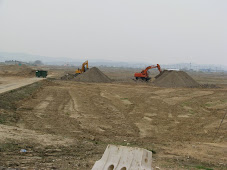


![[Collection of Documents] No Base Learning and Solidarity Program_Korea(June 14 to 20, 2010)](http://1.bp.blogspot.com/_gnM5QlRx-4c/TCTvVuN8NeI/AAAAAAAAEek/8vBJVaHdk10/S227/No-Base-banner.jpg)
![Site Fwd:[John Hines] A U.S. Debate coach’s research trip on the Issues of Korea](http://3.bp.blogspot.com/_gnM5QlRx-4c/TINCO36mzzI/AAAAAAAAE_w/Rds12NcBOXM/S227/Jeju-Peace-Tour.jpg)


![[News Update] Struggle Against the Jeju Naval Base since Jan. 18, 2010](http://1.bp.blogspot.com/_gnM5QlRx-4c/S1vvWaP25uI/AAAAAAAACkg/QvpW1tgOlKM/S226/scrum1.jpg)


![[Urgent] Please spread the Letter!: There was no Explosion! There was no Torpedo! (May 26, 2010)](http://4.bp.blogspot.com/_gnM5QlRx-4c/S_9JmsKEU7I/AAAAAAAAEP8/sAWjSPqxzUI/S227/grounded.jpg)
![Text Fwd: [Stephen Gowans]The sinking of the Cheonan: Another Gulf of Tonkin incident](http://1.bp.blogspot.com/_gnM5QlRx-4c/TAL_FtYKQ-I/AAAAAAAAERE/NEEMijiEcRM/S227/lee-myung-bak.jpg)
![[Japan Focus]Politics in Command: The "International" Investigation into the Sinking of the Cheonan](http://1.bp.blogspot.com/_gnM5QlRx-4c/TBMJ2syJzyI/AAAAAAAAEZU/uTYZccU5vyk/S227/wen_jiabao_and_lee_myungbak.png)
![[Japan Focus] Who Sank the SK Warship Cheonan? A New Stage in the US-Korean War and US-China](http://2.bp.blogspot.com/_gnM5QlRx-4c/S_iQ2vE5ZpI/AAAAAAAAEOU/Oo1SPcAe8FE/S227/buoy_map.gif)
![[Updated on 12/13/10] [Translation Project] Overseas Proofs on the Damages by the Military Bases](http://4.bp.blogspot.com/_gnM5QlRx-4c/S-qSj59gPLI/AAAAAAAAEGM/mwjlFtPE-jo/S227/missile.jpg)
![[International Petition] Close the Bases in Okinawa](http://3.bp.blogspot.com/_gnM5QlRx-4c/S8-z3DYNwNI/AAAAAAAADo4/OswTSchK09M/S227/2.jpg)

![[In Update]Blog Collection: No Korean Troops in Afghanistan](http://4.bp.blogspot.com/_gnM5QlRx-4c/SwnlLD9IewI/AAAAAAAAB9E/oUPssnpNidA/S226/No-Troops-to--Afghanistan.jpg)
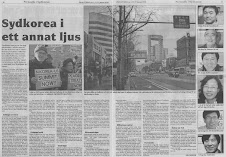

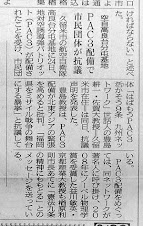

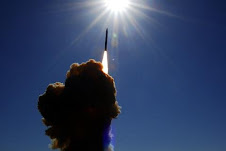






No comments:
Post a Comment